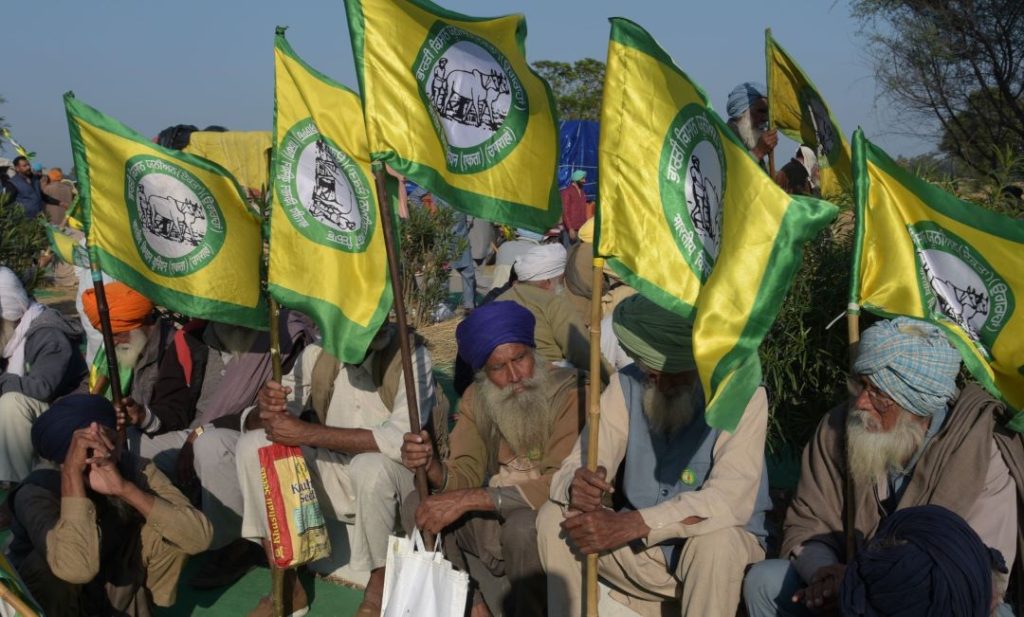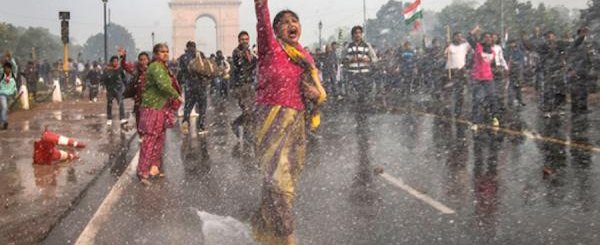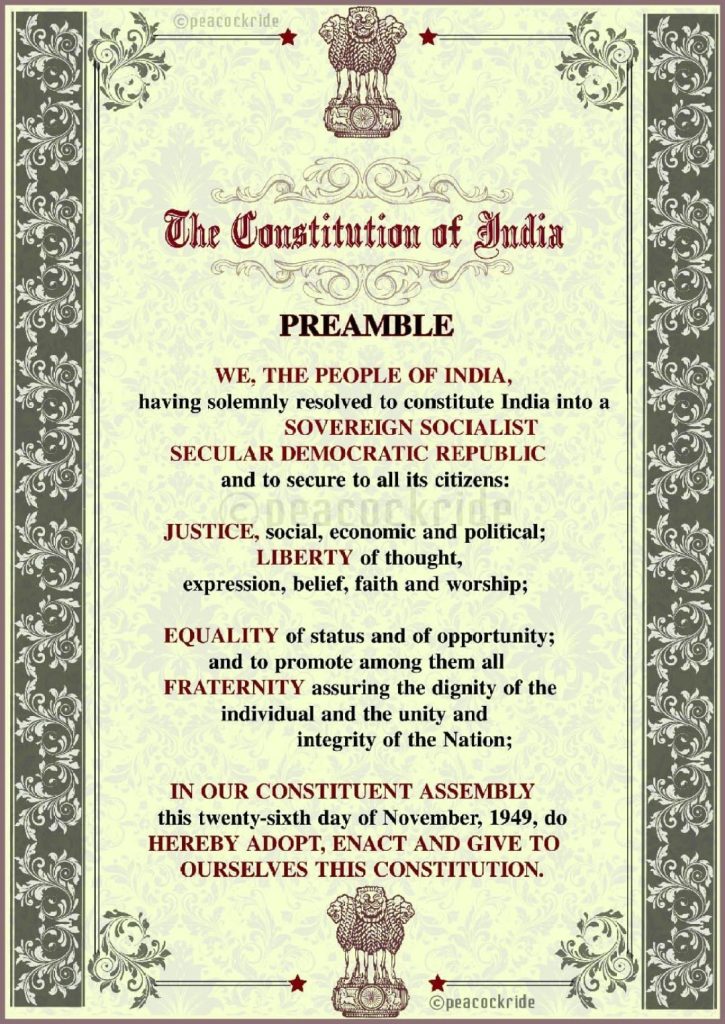Drie draconische landbouwwetten teruggetrokken
Na een heroïsch, maandenlang volgehouden protest en 750 doden hebben de Indiase boeren (vooral uit de deelstaten Punjab en Uttar Pradesh) de regering-Modi gedwongen drie draconische landbouwwetten weer in te trekken.
Die wetten, waarover we het ook al in vorige nieuwsbrieven hadden, zouden regeringsafspraken ongedaan maken en de steeds machtiger wordende agrobusiness alle macht bezorgen. Daardoor vreesden de boeren beroofd te zullen worden van hun autonomie en niet meer in staat te zijn om nog te voorzien in hun dagelijks levensonderhoud.
Bernard D’Sami, verbonden aan het Loyola College in Chennai, bericht hierover in onderstaand artikel. Hij wijst erop dat de hoofdreden waarom de regering-Modi heeft toegegeven te maken heeft met de vrees voor een nederlaag in de komende deelstaatverkiezingen in Punjab en Uttar Pradesh (UP).
De landbouwpolitiek en de minimumprijzen (MSP) verschillen immers van deelstaat tot deelstaat en de regerende hindoenationalistische partij (BJP) kan erop aangesproken worden.
Bernard D’Sami toont ook statistieken over landverdeling in India en een uittreksel uit het eindrapport (2006) van de National Commission on Farmers. Daaruit blijkt wie het land bezit en hoeveel land er in bezit is genomen. Bernard voegt hier ook nog enkele aanbevelingen van de commissie aan toe. De hele kwestie van de drie draconische wetten moet volgens hem bekeken worden vanuit het perspectief van noodzakelijke landhervorming in India.
Hieronder vind je het integrale artikel in het Engels.
Farm Laws Withdrawn
On September 27, 2020, India’s President gave assent to three farm bills passed by the Parliament. A cursory look at the bill would reveal the drawbacks of the Acts.
1) The Farmers’ Produce Trade and Commerce (Promotion and Facilitation) Bill, 2020
This legislation seeks to give freedom to farmers to sell their produce outside the notified Agricultural Produce Market Committee (APMC) market yards (mandis). Farmers feared the worst in terms of end to the minimum support price (MSP) for their produce, making way for private companies to exploit the situation by giving much lower than the support price.

2) The Farmers (Empowerment and Protection) Agreement of Price Assurance and Farm Services Bill, 2020
Instead of making the farmers sell their produce in the APMC through the licensed middlemen in the mandis, the proposed legislation seeks to give farmers the right to enter into a contract with agribusiness firms, processors, wholesalers, exporters, or large retailers for the sale of future farming produce at a pre-agreed price. The result would be the domination of big corporates in the Indian food and agriculture business.
3) The Essential Commodities (Amendment) Bill, 2020
The law seeks to remove commodities like cereals, pulses, oilseeds, onion, and potatoes from the list of essentials and do away with the imposition of stock holding limits on such items except under ‘extraordinary circumstances’ like war, famine, extraordinary price rise, and natural calamity.
The fear of the government imposing a cap on the stock was one of the reasons the farmers protested against this Bill. Hoarding of essentials by the big corporates and dictating terms to the farmers posed a threat to them.

The farmers opposed these three Bills and agitated for the withdrawal of all three Acts. Their protest was heroic! Braving the unfavourable weather conditions and corona threat, unintimidated, they resisted the three farm laws. More than 750 of the farmers died in the course of the agitation.

Punjab was on fire from the day this Act came into force. The farmers’ agitation was also spreading to UP, Haryana, and many other states. The farmers’ associations in many states extended their solidarity to the agitating farmers.
Now the government has announced that they are withdrawing these Acts. Almost everyone has observed that this is due to the fear of the ruling party’s rout in the elections to the states such as Punjab and UP.
Agriculture in India is a State subject. A State is supposed to enact laws and protect the interest of all the farmers (small, medium, and large). Being a diverse country, Acts also differ from State to State in the minimum support price (MSP) fixed by the States.
Agricultural produce also changes from region to region. The following is an extract from the National Commission on Farmers (NCF), which was established in 2004 and the final report was submitted in 2006.
The report by Dr MS Swaminathan covers information regarding who owns the land and how much is being owned. One can see these three Acts on the verge of being withdrawn are to be seen from the perspective of land distribution in our country. Some of the recommendations made by the commission are appended below.
Land Reforms are necessary to address the basic issue of access to land for both crops and livestock. Landholding’s inequality is reflected in land ownership. In 1991-92, the share of the bottom half of the rural households in the total land ownership was only 3% and the top 10% was as high as 54%.
Distribution of Land
| Landholding | % of Households | % of Landholding |
| Landless | 11.24 | |
| Sub-margin holdings (0.01 – 0.99 acres) | 40.11 | 3.80 |
| Marginal holdings (1.00 – 2.49 acres) | 20.52 | 13.13 |
| Small holdings (2.50 – 4.99 acres) | 13.42 | 18.59 |
| Medium holdings (5 – 14.99 acres) | 12.09 | 37.81 |
| Large holdings (15 acres + above) | 2.62 | 26.67 |
| 100.0 | 100.0 |
(Source: Fifth NCF Report based on Some Aspects of Household Ownership Landholdings)
Some of the main recommendations include:
- Distribute ceiling-surplus and wastelands.
- Prevent diversion of prime agricultural land and forest to the corporate sector for non-agricultural purposes.
- Ensure grazing rights and seasonal access to forests to tribals and pastoralists, and access to common property resources.
- Establish a National Land Use Advisory Service, which would have the capacity to link land-use decisions with ecological meteorological and marketing factors on a location and season-specific basis.
- Set up a mechanism to regulate the sale of agricultural land based on the quantum of land, nature of proposed use and category of buyer.
None of these issues was addressed, and the laws did not protect the farmers from any of these recommendations.
A country and a party need to know what has been previously done and build on those foundations. Otherwise, contradictory laws will threaten the life of the farmers and their challenges will push them to a longstanding struggle like this. The withdrawal has come at a very dear cost, paid with the lives and the morale of the farmers.
Bernard D’Sami
Dr Bernard D’Sami is senior fellow at LISSTAR, Loyola College (autonomous), Chennai – 600 034, India

What Is the Price of the Modi Years?
In a brilliant interview with The Wire, Aakar Patel sets the context for his new book ‘The Price of the Modi Years’.
In Conversation with Aakar Patel:
In a book documenting and systematically listing events, policies and incidents, Aakar Patel, author, columnist and chair of Amnesty International India said the overwhelming outcome of the Modi years has been negative for the country.
Whether it is on parameters of economics, human rights, defence and security or communal harmony, Aakar’s book ‘Price of the Modi Years’ points to evidence and events that he believes indicate the clear fall that India has seen. In conversation with Mitali Mukherjee, Patel discusses how the core idea of majoritarianism has been used to push through several unconstitutional laws and to distract from deep economic distress.
He points out, with solid data that India is not achieving any magnificence under Modi. Our economy is completely busted. Per capita income has fallen below Bangladesh; and labour force participation is at 40%, a quarter below what it was before Modi, and now behind Pakistan.
The only achievement of BJP Governments is that they find new ways to torment the minorities: sometimes through targeted, discriminatory laws; sometimes by shutting down food outlets; sometimes by denying people place to worship.
Though as Aakar Patel says, the damage that this hatred is causing to the psyche of our children is difficult to assess. And so, I may add, are the enormous human costs: from hand cart wallas in Ahmedabad selling non-veg food, to lynch mob victims in UP.
Wie de integrale video wil bekijken, kan terecht op de volgende link: https://youtu.be/HozHH4sD8Pg




